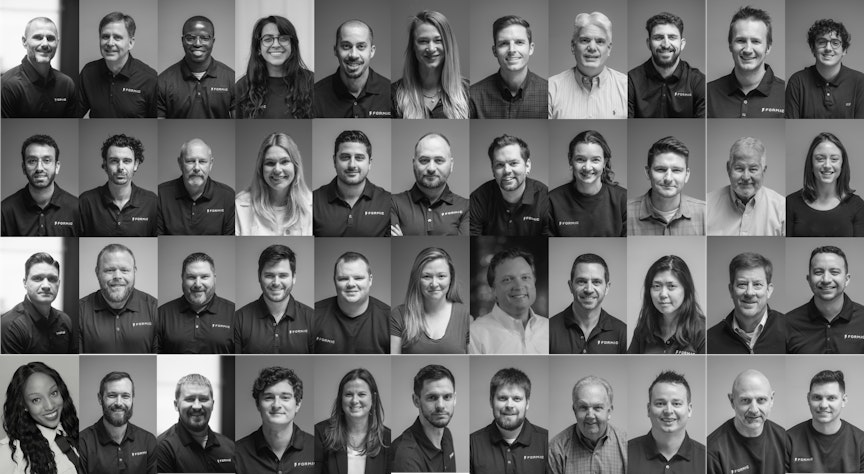Jack Wagler, Treasurer and VP of Finance at Formic
What is your position, and how involved are you with incoming customer deals?
What we are doing is very unique. When you are offering a new solution like RaaS, you have to have new contracts and new documentation to allow that to happen. A key part of my involvement with the customers is to build the framework for the arrangement between the customer and us.
When we have an opportunity to work with companies such as Polar Manufacturing, the sales and engineering team will often bring me in to help answer questions a customer may have in terms of how all of this fits together. They might ask what does it look like potentially for our accounting? What will the impact be for our taxes? What does this mean from a legal perspective? Although every company’s situation is different, we can share with them how other companies in the industry approach the same questions.
How would you describe RaaS to a customer that might be unfamiliar with the concept?
There is an analogy I like to use that provides a good framework to help people understand what RaaS is, what it is similar to, and how it relates to something they already know. When someone buys a car, they can pay cash for it, they can get a car loan, or they can get a 3 year lease with the ability to return it at the end of the term. However, if someone wants the benefit of a car, they can also go to Hertz or Avis and rent a car for a day, a week, or a month, or they can call Uber or Lyft. In all of these cases, it is the same asset, except in each scenario, the person is engaging with that asset in a different way.
If you buy a car with cash and the car breaks, there may be a warranty, but after the warranty expires you will have to pay to fix whatever breaks. Even before the warranty expires, the owner will need to change the oil, the brake pads, the wiper fluid, etc. On the other hand, if you call Uber or Lyft, they are handling everything including gas, changing the oil, putting in windshield wiper fluid, and getting the insurance. On one end of the spectrum, it’s more of a buffet style as you have to get the asset and must maintain it. On the other end of the spectrum, you are just getting a service that is delivered.
The reason I like this example is it illustrates a key point that there is not a right or wrong solution. For some, it might make more sense to buy the robot, install it, and maintain it. On the other hand of the spectrum, someone might say I don’t want to hire engineers. I don’t want to be responsible for having a whole infrastructure set up to buy parts and install things and maintain things.
For those companies who just want to get the result, our solution is you pay one price and you get that solution. Robotics-as-a-service is part of a broader spectrum of other things that people want to use in their life and to decide whether to buy the asset themselves or to buy the solution.
This example drives a lot of the questions we get. As a customer considers Formic, they start to ask is there any other cost for me? And the answer is no. When I use Formic, what does this all mean from a risk point of view? Again, we take on all the risk. When I use Formic, what does it look like from a cost point of view? Well, we buy everything upfront.
In what situation do you think it is more fitting for a manufacturer to consider using Formic to provide their robot?
There is no one size fits all and there are several things to consider.
Does the customer want to build, staff, run, and maintain an engineering structure around automation. Again, there is no right or wrong answer. For example, railroads. If you go back a number of years, railroad companies owned the tracks, maintained them, and bought all of the locomotives and railcars out of their own pocket. They had all of the solutions and all of the assets. Over time though, they asked themselves, are we in the business of buying and owning assets? They realized their answer was no. Most of them decided that their business was about taking materials and supplies from point A to point B in the cheapest, fastest, and on-time way. They asked themselves whether it was important for them to be really good at owning and maintaining a railcar or locomotive? Their answer was no, there are companies out there that can do it better, faster, and cheaper than we can and so they began to use those companies for some of their railcars and locomotives. As they rethought what their business should be, their customer service and results improved.
Just think about all the everyday things we outsource. For example, do we make our own electricity? Although some people may have solar, most people buy their electricity because there is someone else out there who can make it cheaper and easier. Do we produce our own water? Some people dig wells, but many people get their water from a utility. These are all examples of where there is no right or wrong answer, but it starts from the question of what is my business. If my business is to make a certain part and I want to make that part really, really well, then how should I allocate my resources? Where could I put the time, energy, and focus if I was not putting it into maintaining and buying equipment? I could hire more salespeople, open up another plant, or expand into a new geography. A company could, therefore, decide that they don’t want to build a whole infrastructure around automation and robotics. Instead, they would rather have a company like Formic who has the experience with robotics and automation worry about it as Formic can do it better, faster, and cheaper.
What do you see Formic achieving or changing in the next 5 to 10 years?
I think the current environment that we are in, with the supply chain issues and the labor shortage, emphasizes why RaaS makes sense. Therefore, we currently serve customers who are small to medium sized manufacturers across metals, welding, machine tools, and the food service space. However, what I think is interesting is where robotics technology is pushing the envelope. Maybe Formic is not exactly there yet, in terms of what technology we are offering, but there is a lot of potential in, for example, agriculture. I grew up on a farm so for me that is a very interesting sector where robots are expanding into. As robotics continues to move into other segments of the marketplace, I would like to see Formic move into these segments as well.
However, in a more immediate way, I hope Formic can continue to find new solutions to help support customers no matter what the uniqueness of their needs. That is what I enjoy most about what we do, listening to our customers’ greatest friction points and helping them figure out how to relieve those pressures.
Jack Wagler


